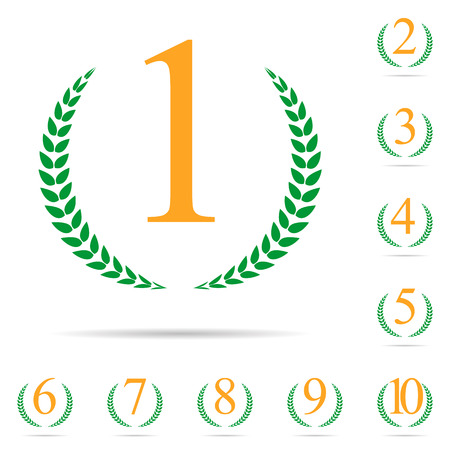Understanding Mounts in British Palmistry
In the realm of palmistry, mounts are the raised, fleshy areas found at the base of the fingers and along the palm. For centuries, British palmists have paid particular attention to these features, interpreting them as windows into an individual’s character, tendencies, and even fate. The study of mounts in the UK is deeply rooted in both historical tradition and cultural nuance, blending classical interpretations from European sources with uniquely British perspectives developed during the Victorian era and beyond. Mounts are typically classified according to their position—such as the Mount of Venus beneath the thumb or the Mount of Jupiter under the index finger—and each is believed to govern distinct aspects of personality and life path. In Britain, palmists often approach mounts with a combination of scientific curiosity and folkloric wisdom, reflecting the nation’s longstanding fascination with both empirical observation and mystical insight. This dual approach underscores why understanding mounts, particularly double and plain types, remains a cornerstone for British practitioners seeking to unravel the deeper meanings hidden within one’s hands.
2. Double Mounts: Interpretation and Nuances
In the context of British palmistry, a “double mount” refers to the phenomenon where two adjacent mounts—those slightly raised pads at the base of each finger or on the palm—are both pronounced or merge together, rather than appearing as a single, well-defined area. This subtle distinction is important for UK-based readers, who often take a nuanced approach that goes beyond textbook definitions.
What Constitutes a Double Mount?
A double mount forms when the skin and underlying tissue between two neighbouring mounts are equally elevated, blurring the boundary between them. For example, instead of a single Mount of Venus (beneath the thumb) standing out, one might find that both the Mount of Venus and the Mount of Luna (along the outer edge of the palm) are raised and almost join together. Such features are particularly noted by experienced British palmists, who value these complex patterns for their layered symbolism.
Typical Double Mount Examples in British Hands
| Double Mount Combination | Common British Traits | Palmists’ Interpretations |
|---|---|---|
| Mount of Jupiter & Saturn | Ambitious, practical individuals, often seen in professionals and businesspeople | A blend of leadership with realism; someone who sets lofty goals but remains grounded |
| Mount of Apollo & Mercury | Creative communicators, such as writers or public speakers | An expressive nature; combines artistic flair with persuasive skills |
| Mount of Venus & Luna | Empathetic personalities drawn to creative or caring professions | Deep imagination paired with emotional depth; heightened sensitivity |
The Layered Meanings Attributed by Palmists
British palmists interpret double mounts as indicators of complex character traits—a “blending” rather than a doubling. For instance, when two mounts merge, it’s not just about having two strengths, but how those qualities interact. A person with both Jupiter and Saturn mounts emphasised may display ambition channelled through discipline—a trait especially admired in British culture for its association with perseverance and reliability.
Cultural Nuances in Interpretation
Unlike some traditions that might see double mounts as conflicting energies, British palmistry often regards them as harmonious or complementary. The focus is on how these dual influences shape practical behaviour, decision-making styles, and interpersonal relationships. In readings across the UK, palmists pay close attention to these combinations to tailor their guidance to local attitudes—valuing balance, subtlety, and understated strength.

3. Plain Mounts: Simplicity and Subtle Indicators
Within the nuanced world of British palmistry, plain mounts—those areas of the hand that show little or no elevation—are just as significant as their more pronounced counterparts. While double mounts may signal dynamic or conflicting energies, plain mounts represent simplicity, restraint, or even a lack of emphasis in certain personality traits. British palmists approach the reading of plain mounts with particular care, recognising that their subtlety can offer unique insights into an individual’s character.
When examining a palm with several plain mounts, British readers often interpret this as indicative of modesty, practicality, or a reserved nature. For example, a flat Mount of Venus might suggest someone who values emotional balance over passionate extremes, while an undeveloped Mount of Jupiter could point to humility rather than ambition. The absence or minimal development on these areas does not imply deficiency; rather, it highlights qualities such as self-restraint and groundedness that are often admired in British culture.
Context is crucial in these readings. Seasoned palmists consider the overall composition of the hand and other features such as line clarity and finger shape before drawing conclusions about plain mounts. A plain mount surrounded by strong lines or distinctive fingers may still carry underlying potential, suggesting that certain traits are present but expressed in a measured or understated manner. This aligns well with the traditional British appreciation for understatement and subtlety.
British palmists also pay attention to how plain mounts interact with the rest of the hand. If several mounts are plain while one stands out, this could indicate a person who channels most of their energy into a single area of life, rather than spreading themselves thinly across many interests. This focused approach is often interpreted as a sign of dedication and reliability—values that resonate strongly within UK society.
Ultimately, the reading of plain mounts requires both technical skill and cultural sensitivity. British palmists have developed a refined sense for interpreting these understated features, seeing them not as absences but as quiet strengths. By appreciating the subtle indicators offered by plain mounts, they provide clients with a more holistic understanding of their personalities, reinforcing the idea that sometimes, less truly is more.
4. Key Markings and Line Associations
When it comes to British palmistry, the synergy between mounts and palm lines is central to any meaningful reading. Understanding how double and plain mounts interact with the major lines—such as the heart, head, and life lines—can reveal subtle nuances in a subject’s character and fate. British practitioners often place particular emphasis on specific markings that may not be as widely recognised elsewhere, lending a distinctively local interpretation to each hand.
Analysing Mounts and Line Interactions
The interplay between a mount’s development (double or plain) and the adjacent or crossing lines can dramatically alter a reading. For example, a well-developed double Mount of Venus intersected by a strong life line might suggest robust vitality and affectionate nature, whereas a plain mount in the same area could indicate restraint or a more pragmatic approach to relationships.
Unique British Markings: What to Look For
| Mount Type | Associated Line | Unique British Markings | Interpretation |
|---|---|---|---|
| Double Jupiter | Head Line | Star marking near junction | Strong leadership with clear vision; respected locally |
| Plain Apollo | Heart Line | Grille pattern overlaying mount | Cultural appreciation, but reserved emotional expression |
| Double Mercury | Life Line | Trident formation at base | Resourcefulness in overcoming challenges; quick wit admired in British circles |
| Plain Mars (Upper) | Fate Line | Single horizontal bar crossing both areas | Steadfastness amidst adversity; “keep calm and carry on” mentality |
The Significance of Intersections and Overlays
In the UK, palmists are particularly attentive to where lines intersect or overlay mounts, as these junctures often symbolise key life events or turning points. Double mounts crossed by multiple fine lines may suggest an individual who is both multifaceted and adaptable—a trait often valued in British society. Conversely, a plain mount with minimal interference from lines can denote reliability and constancy, traits that resonate with traditional British values.
This systematic attention to detail allows British palmists to offer readings that are not only personalised but also deeply rooted in local cultural archetypes.
5. Cultural Influences on British Palm Readings
When exploring how palmistry is interpreted in Britain, it’s crucial to acknowledge the subtle yet significant role of traditional British values, idioms, and societal expectations. These cultural factors shape not only how double and plain mounts are read but also influence the broader approach British palmists take during a consultation.
The British Stiff Upper Lip and Interpretative Style
One cannot overlook the famous “stiff upper lip” mentality when discussing British readings. Palmists often adopt a reserved, understated manner, reflecting the national tendency to downplay drama or excess. When examining double mounts—which might elsewhere be read as signs of intense energy or flamboyant character—British readers may interpret them more conservatively, focusing on balance and restraint.
Idioms and Linguistic Nuance in Readings
The language used during readings is peppered with distinctly British idioms and phrases. For instance, a palmist might refer to someone with pronounced plain mounts as having “both feet firmly on the ground,” alluding to practicality and common sense—traits highly valued in British culture. Similarly, the phrase “a safe pair of hands” could be invoked when interpreting stable, even mounts, highlighting reliability over risk-taking.
Societal Expectations: Privacy and Discretion
British society often places great importance on privacy and discretion. This translates into palm readings where sensitive subjects are broached delicately, if at all. Double mounts that suggest strong passions or tumultuous experiences may be acknowledged indirectly, with the palmist emphasising potential for self-control or quiet resilience rather than overt drama.
Historical Context: The Influence of Class
Historically, class has played a notable role in shaping social attitudes across Britain. In palmistry sessions, this manifests as an awareness of social mobility, ambition, and duty when interpreting mounts related to career or family. A double Jupiter mount might be described as indicative of “aspiring to better oneself,” reflecting a uniquely British appreciation for ambition tempered by humility.
Together, these cultural layers ensure that British palm readings remain distinct—grounded in tradition, marked by subtlety, and always attuned to the values that define British society.
6. Practical Guidance for Aspiring Palmists in the UK
For those keen to delve into the intricacies of reading double and plain mounts, particularly within a British context, a methodical approach is essential. Accurate mount identification requires both theoretical understanding and hands-on practice, especially given subtle differences in interpretation found among reputable UK palmists.
Systematic Observation: Developing Your Eye
Begin by familiarising yourself with clear visual references of double and plain mounts from trusted sources. British palmistry texts such as Cheiro’s works or Johnny Fincham’s guides offer well-illustrated examples. Spend time observing real hands—preferably across various ages and backgrounds—to appreciate the diversity present in the British population.
Structured Note-taking and Analysis
Maintain a dedicated journal for your readings. Record not only what you observe but also your interpretations, cross-referencing with established palmistry manuals. This helps cultivate consistency and objectivity, reducing the influence of personal bias—a value held in high regard among experienced British palmists.
Learning from Reputable Practitioners
Seek opportunities to attend workshops or talks by respected UK-based palmists such as Johnny Fincham or Robin Lown. Observing their analytical approach will enhance your ability to distinguish between nuanced mount formations, especially when differentiating between doubles and plains.
Utilising Quality Resources
Invest in classic and contemporary British palmistry books, like “Palmistry: Apprentice to Pro in 24 Hours” (Fincham) or Cheiro’s “Language of the Hand.” Online forums, such as The Chirological Society of Great Britain, provide community support and practical feedback on your observations.
Continuous Practice and Ethical Considerations
Consistent practice is key—offer complimentary readings to friends or through local interest groups to refine your skills. Always approach each reading with cultural sensitivity, acknowledging that palmistry remains an interpretive art rooted in both tradition and personal insight.
Further Reading and Continued Growth
If you wish to deepen your expertise, consider formal training courses or certifications available in the UK. Stay engaged with current discussions through publications like “The Palmistry Review” or local meetups. By combining rigorous study with practical experience, aspiring British palmists can master the skillful interpretation of double and plain mounts—honouring both technique and tradition.


